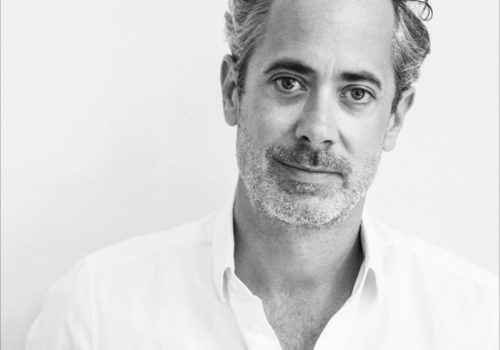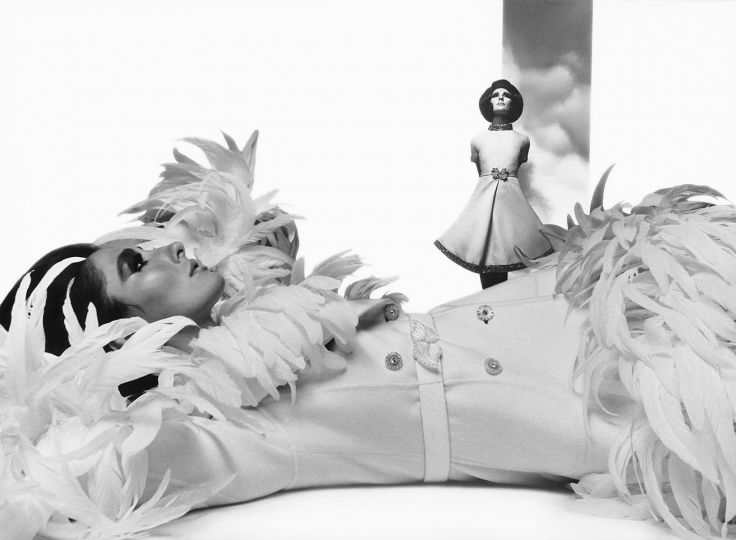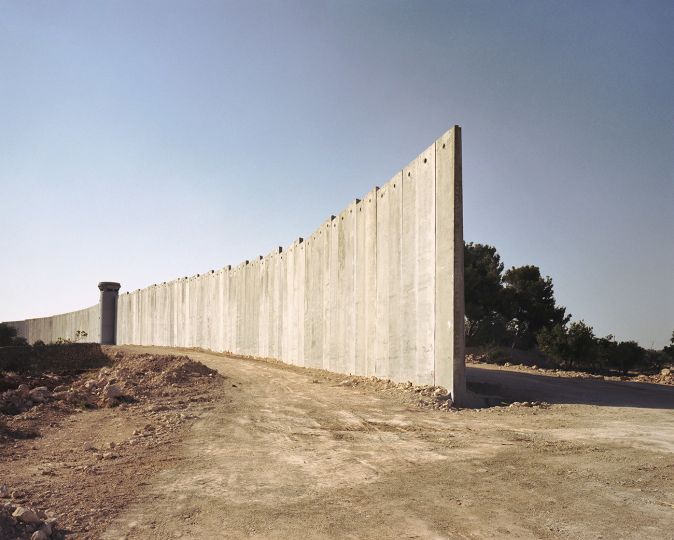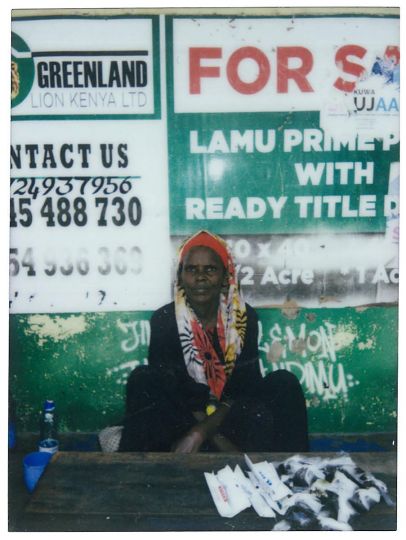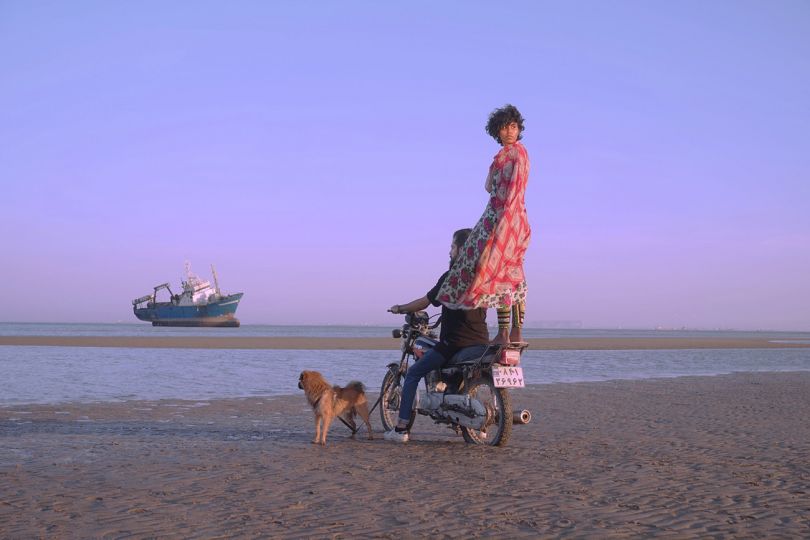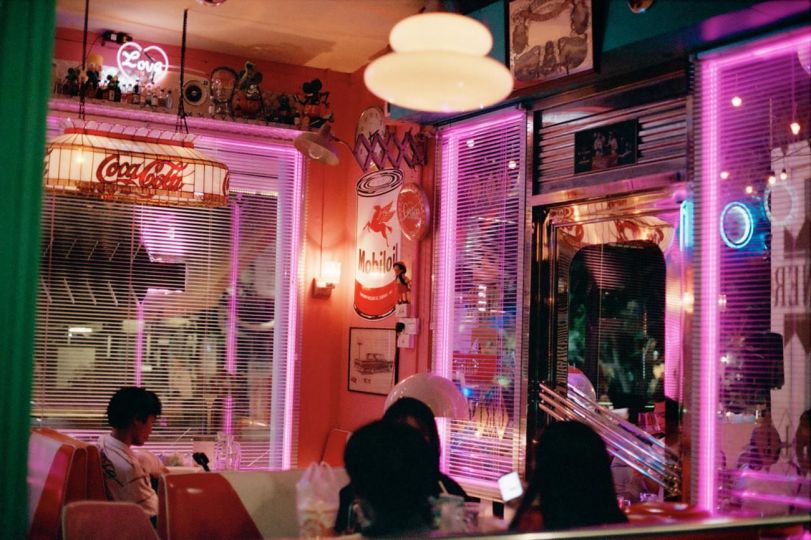Benjamin Jäger has been active in the international photo art market and gallery business for over 15 years. I knew him back during his Camera Work days, but this wasn’t the only place you would find him. He was out there, at the photography fairs, the most important events, VIP receptions, and get-togethers. And with his radiant smile, sleek appearance, and worldly charm. People loved and love having him around. As a photography & art advisor, Jäger advises and supports various collectors, collections, and estates. In Germany and abroad, he travels a lot for his work with select artists, developing new concepts, exhibition formats, as well as strategic approaches and partnerships. Beside this, Benjamin Jäger is the co-founder and art director of BERLIN PHOTO WEEK.
We were curious about how everything started, and the background Jäger brings to art world. So we met for a proper re-cap, and to ask him “what’s new?”
Nadine Dinter: You initially studied law, then shifted into the arts. What inspired this career change?
Benjamin Jäger: I have been a fan of the arts since my youth and developed my love for photography at an early age. Since its founding and the opening of its gallery in Kantstrasse, CAMERA WORK has been among the top addresses in the world of photographic art with its international orientation. Later, it pursued an extremely innovative business model as a publicly held company – for me, it offered the perfect entry into the international art world. As managing director and board member of CAMERA WORK, I was able to contribute the expertise I gained through my law degree, particularly in terms of strategy, but also operations, as a liaison for collectors, artists, shareholders, and art-interested investors. My areas of responsibility were at the crux of classical art world and the financial world, which strongly influenced my understanding of the global art market.
You worked for many years at CAMERA WORK Gallery, one of the most renowned galleries for photography worldwide. What did you do there?
BJ: As the gallery’s managing director and executive board member of the publicly held company, I was responsible for business operations as well as for the areas of strategy, finance, innovation, and digitalization. Among other things, I curated numerous exhibitions with photographers such as Anton Corbijn, Martin Schoeller, Andreas Mühe, and Paolo Roversi; designed our concept for art fair presentations in Paris, London, Shanghai, and Tokyo; initiated and carried out collaborations with museums; and accompanied the acquisition of estates and collections. But it wasn’t only the classic gallery business that interested me. I was also always looking for ways to innovate – for example, upskilling to take the classic gallery into the digital world. A key to success in this respect was maintaining contact with the start-up scene and adopting new business and collaboration models.
In 2017, you decided to strike out on your own and launched your own consulting business. You’ve since worked as a photography & art advisor, collaborating with collectors, collections, and estates. Could you give us some insight into what an art advisor actually does?
BJ: I work at the nexus between artists, collectors, galleries, fairs, investors, museums, and estates, just to name a few of the stakeholders. It’s important to understand the interests of your respective partners, to bring them together and connect them with each other. Going beyond the classical 1:1 relationship (e.g. artist/gallery), I focus equally on innovative forms of collaborations, exhibitions, and presentations.
A perfect example is the conceptualization and steady evolution of BERLIN PHOTO WEEK, which I launched in 2018 with Gen Sadakane and Flo Meissner – the founders of the photo platform EyeEm, an online community of over 25 million photographers.
The corona pandemic has driven digital transformation across all sectors – and the art world, too, has changed over the last 12 months to embrace virtual forms of presentation and transaction. New digital formats brought the industry revenue that, in some cases, has been vital for its survival. The assumption that art can only be sold in analogue form has been clearly disproved in recent months. This development is set to continue.
As an art advisor, my principle is to stay ahead of the curve – this means being aware of innovations, especially from other areas of life and work, and whether they can be adapted to the art world. This makes dialogue and collaboration with the financial and tech worlds, the start-up scene, as well as with the international fashion, film, and music worlds, essential for my work as an art advisor.
Of course, I am still active in the “classical” field of advising and consulting – advising collectors on strategic acquisitions and sharing ideas about interesting young and contemporary positions, exploring the possibility of expanding their collection in new directions. I support art lovers who are just starting out as collectors by bringing a little more transparency to what can be a highly diverse and sometimes confusing market.
I also advise established artists and young artists who are still at the beginning of their career, such as Evelyn Bencicova. For example, I encouraged Evelyn to apply for the exhibition BERLIN MASTERS, initiated by Matthias Arndt and curated by Philipp Bollmann. Not only was she nominated for the exhibition, she was also awarded the coveted BERLIN MASTERS SCHLIEMANN RESIDENCY, an artist-in-residence program for photography, video, and new media which takes place during the acclaimed Rencontres de la Photographie d’Arles.
You also curate shows and organize private tours of artist studios for collectors, the press, and more – who are some of the artists you have been working with?
BJ: In my opinion, one of the most intense encounters that can take place between a collector and artist is at the point of creation and, ideally, in the process of creating a work of art. So I’m always glad to facilitate this very special and personal kind of relationship and encounter at the artists’ studios.
For the past several years, I have been organizing OPEN STUDIOs in conjunction with Gallery Weekend and Berlin Art Week, with artists such as Tina Berning and Julio Rondo, Olaf Heine, Susanne and Claus Rottenbacher, and Brigitte Waldach. During these visits artists sometimes show new works or series currently in production, and share their thoughts on them with a small circle of visitors. This exchange between artists, collectors, curators, publishers, and art writers creates an exceptional atmosphere.
In 2018, you founded BERLIN PHOTO WEEK, together with Gen Sadakane and Florian Meissner from EyeEm. How did that come about?
BJ: Gen, Flo, and I have years of expertise in photography, albeit in completely different business fields. The two of them founded EyeEm and come from the young, dynamic start-up scene – which is of course the perfect partner for such an innovative and novel project. From the very beginning, our common vision was to bring together the various interests and sectors within the diverse medium of photography – such as the camera industry, tech companies, culture and photography lovers, technology fans, etc. – at a central event in Berlin.
We had been observing the market from our different angles for long enough and recognized the need for a new format to reflect the fact that photography has become the dominant medium of the 21st century. Smartphones with good cameras are the standard now, and most people snap pictures on a daily basis, sharing them with friends, family, and via social networks. Photography has pervaded our everyday lives and become an international language.
The overall significance of photography and how it is perceived in general have undergone rapid transformation, especially in recent years. New technologies are being developed, and new art forms created. Digitalization has given rise to multiple new channels and platforms, which not only allow the broad public to consume art, but also give artists and other creatives the chance to present their art to a large audience. This has led to transparency in the market as well as its democratization. It was obvious that the time was overdue for a format like BERLIN PHOTO WEEK.
Why did you feel that Berlin, which already has a fairly saturated art market and gallery scene, needs another photography festival?
BJ: When we decided to launch BERLIN PHOTO WEEK in 2018, our ambition from the start was to establish a unique platform uniting all the different interests in photography to celebrate this extraordinary medium together for one week in Berlin.
Anyone who loves photography, who wants to be inspired or informed about the medium, or who is simply interested in seeing fascinating exhibitions, will enjoy our festival. We organize masterclasses, hold conferences with stars of the scene appealing to both amateurs and professionals, present new trends and technologies from the industry, curate exhibitions, and create “FUNPLACES” that encourage visitors to grab a camera and start shooting. BERLIN PHOTO WEEK is a platform for communication and innovation.
Of course, there is already a variety of great events dedicated to photography worldwide, such as the Rencontres in Arles, art fairs like Paris Photo and Photo London, and photo trade shows like Photokina in Cologne, which was considered the world’s leading trade show for the photo, video, and imaging industries. Each of these events appeals to particular audiences.
We see ourselves as a hybrid between these formats to unite various interests, and also as a strong impulse for the Berlin photo community, with all its institutions, galleries, museums, artists, industry, tech, and start-ups, to unite for BERLIN PHOTO WEEK and make a statement that Berlin is a capital of international photography.
During our second edition in 2019, we welcomed over 30,000 visitors on three days, which shows that there is demand for our format and that we seem to have hit the mark. We were particularly pleased that we could reach and inspire an unbelievably large number of younger visitors, who hadn’t yet been so intensively involved with art and photography. After this success we were especially delighted to have gained in IMH (Imaging Media House) and MESSE BERLIN two perfect strategic partners and shareholders, who will support us moving forward with their years of expertise.
Please tell us more about BERLIN PHOTO WEEK and the collaborations among the participating imaging brands, galleries, museums, and artists.
BJ: As I mentioned earlier, the basic idea behind BERLIN PHOTO WEEK is to celebrate photography in all its facets. On the one hand, we have our core location, which this year will be Haubentaucher – one of the summer hot spots of Berlin – at the trendy industrial R.A.W.-Gelände, a mainstay of Berlin’s subculture and colorful nightlife.
We offer all photo aficionados creative inspiration both on site and online: to take photographs, touch & try the newest products and accessories, take a thematic photo walk, meet other photo enthusiasts, get new impulses from our lectures and workshops, as well as enjoy legendary masterpieces of photography in top-class exhibitions.
Together with leading companies from the imaging industry and numerous other partners with a passion for photography, we developed an innovative event concept for this outstanding location. Transcending the boundaries of traditional stand design, we have created extraordinary stages, so-called FUNPLACES, for our photography-loving target group. These inspiring stages and workshops enable visitors to experience brands in a completely new and highly enjoyable way.
At the same time, we want to do more than host our core location – we want to involve the whole city, with its internationally acclaimed museums, institutions, auction houses, and galleries specialized in photography.
I am organizing some of the exhibitions myself, such as that of George Hoynigen-Huene at Grisebach and of Thomas Hoepker at Haubentaucher.
Meanwhile, we have also become the reason for many other institutions to schedule their openings, special events, and guided tours during BERLIN PHOTO WEEK, to tap into the many photo lovers, collectors, and international art professionals it draws to Berlin.
For example, in conjunction with BERLIN PHOTO WEEK, Simone Klein is curating an exhibition at CHAUSSEE 36 with exquisite vintage prints by Heinz Hajek-Halke, including an artist talk about experimental photography.
We also regularly publish a magazine featuring interviews and select exhibitions in Berlin. And, for the first time, there will also be a dedicated BERLIN PHOTO WEEK app.
We are very pleased that we have been so well received by the established photography scene and that we are all working together to create and position an extraordinary unique meeting place for photography in Berlin.
What’s in store for 2021 – what highlights can we expect at this year’s BERLIN PHOTO WEEK?
BJ: There are so many great things I would love to tell you about, but to keep it short, I’ll just mention a few exhibition highlights. The detailed program of exhibitors, exhibitions, artists, talks, and more can be found at the BERLIN PHOTO WEEK website (www.berlinphotoweek.com), Instagram (@berlinphotoweek), and the app.
One of the absolute highlights is the exhibition Timeless Allure with photographs by George Hoyningen-Huene at Grisebach. It celebrates the pioneering photographer who rose to fame in Paris in the late 1920s with his fashion photographs for Vogue and Vanity Fair, and later worked for Harper’s Bazaar in New York. Later he moved to Hollywood where he was a color coordinator for films. Rarely seen prints from his archive will be displayed alongside exquisite large-scale platinum palladium prints. Several of the photographs are being publicly exhibited for the first time. I am particularly proud that we are exhibiting this great photographer in Berlin, especially since there has never been a solo show of his work in Germany before.
We are also very delighted that the artist Jacob Felländer, internationally celebrated for his abstract, multiple exposure cityscapes as well as for his pioneering work in virtual reality, has created a bespoke outdoor exhibition for Haubentaucher. At BERLIN PHOTO WEEK, Felländer will also launch his app, called The Great Escape, which allows visitors to experience a revolutionary augmented reality exhibition around Berlin and at Haubentaucher.
On top of that, I am super pleased that Leica is once again curating wonderful exhibitions on our festival grounds. The Haubentaucher location will feature selected works from the series American Made by renowned Magnum photographer Bruce Gilden. “From what I’ve heard and read about the R.A.W.-Gelände in Berlin, it seems like a very special place that is a great fit for my work. I really like the raw beauty and physical presence that the walls provide,” says Bruce Gilden.
Another show Leica is presenting is Montreux by photographer Michael Agel, at the famous Cassiopeia club – also located at the R.A.W.-Gelände site. Music plays a central role in the photographer’s work and for many years he has accompanied various musicians on tour and at their concerts. From Jamie Cullum to Metallica, Agel always finds a personal approach to the musicians he portrays. And Cassiopeia is a perfect and very authentic location for this exhibition.
What’s the outlook for next year’s BPW edition?
BJ: This year has taught us that you can’t really plan much in advance. But we’ve also learned that you have to adapt to the situation and never give up. The venue for next year – ARENA BERLIN – has already been set and plans are underway for an incredible international photography spectacle that will take place across the city. Unfortunately, I can’t say any more at this stage, but I look forward to giving you an update soon – stay tuned!
What’s your advice for someone who wants to establish something new in a city like Berlin?
BJ: Just do it – but keep the trends in mind.
Make sure to follow Benjamin Jäger on Instagram at @jaeger.art.advisory

